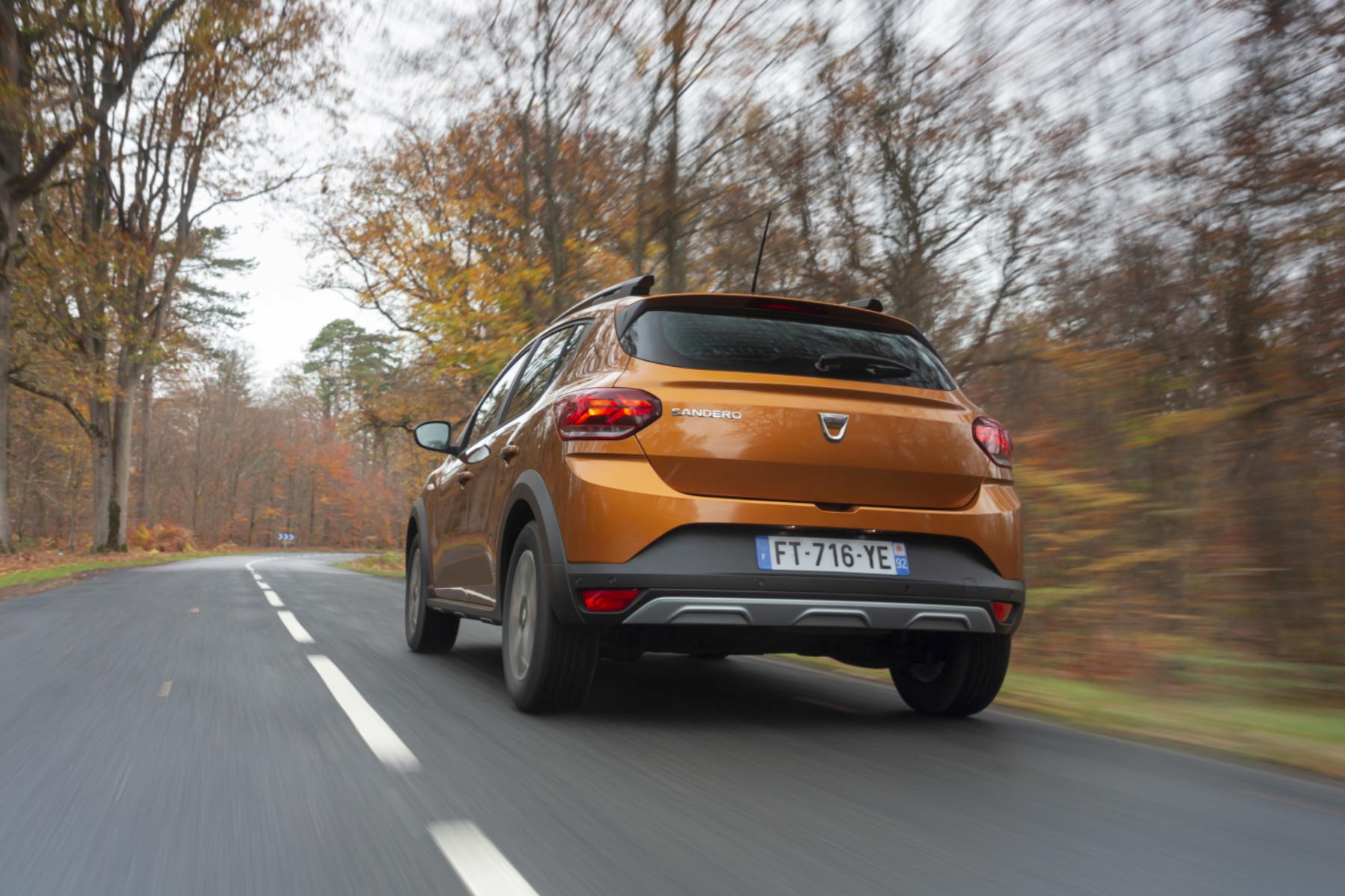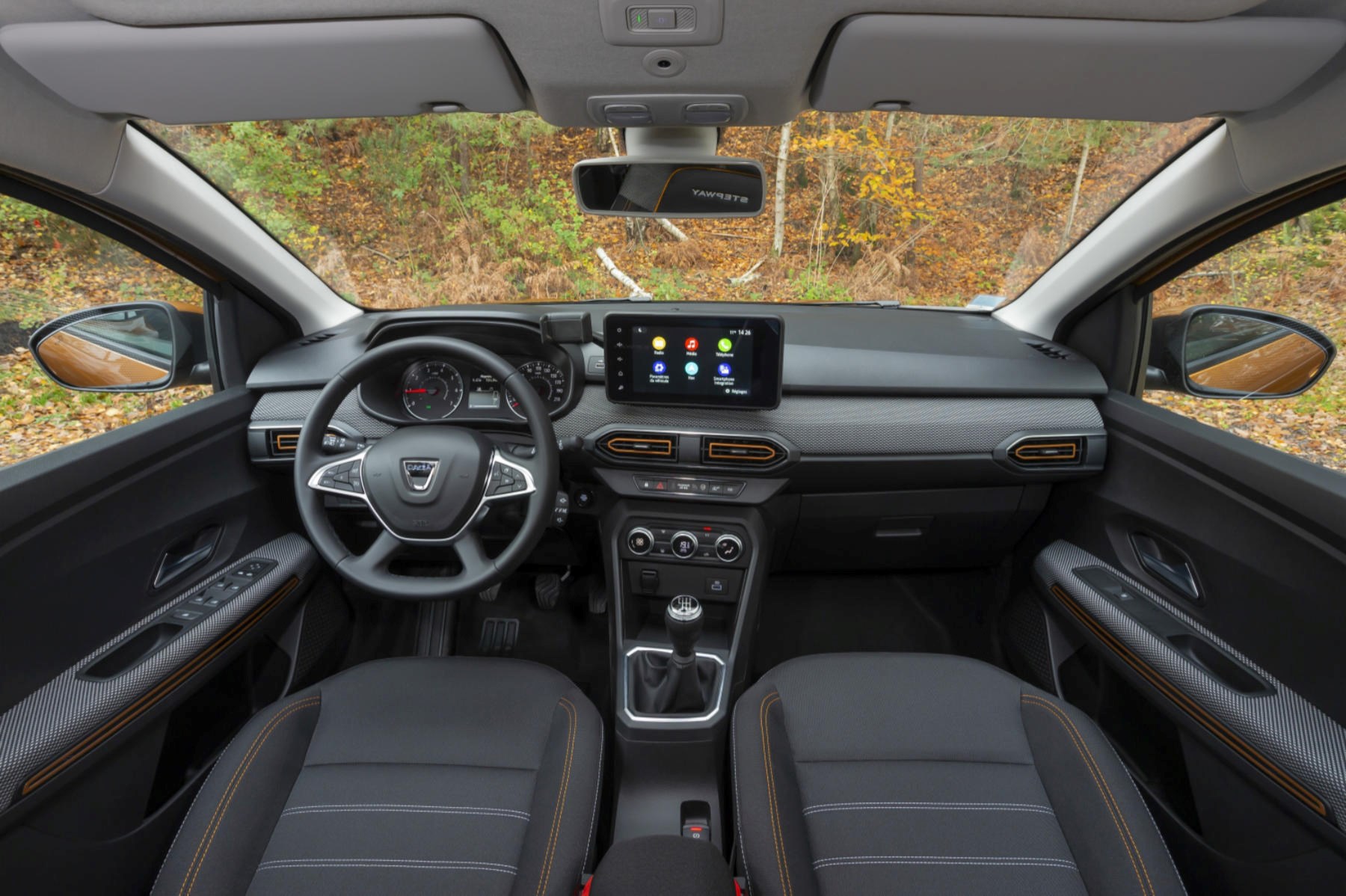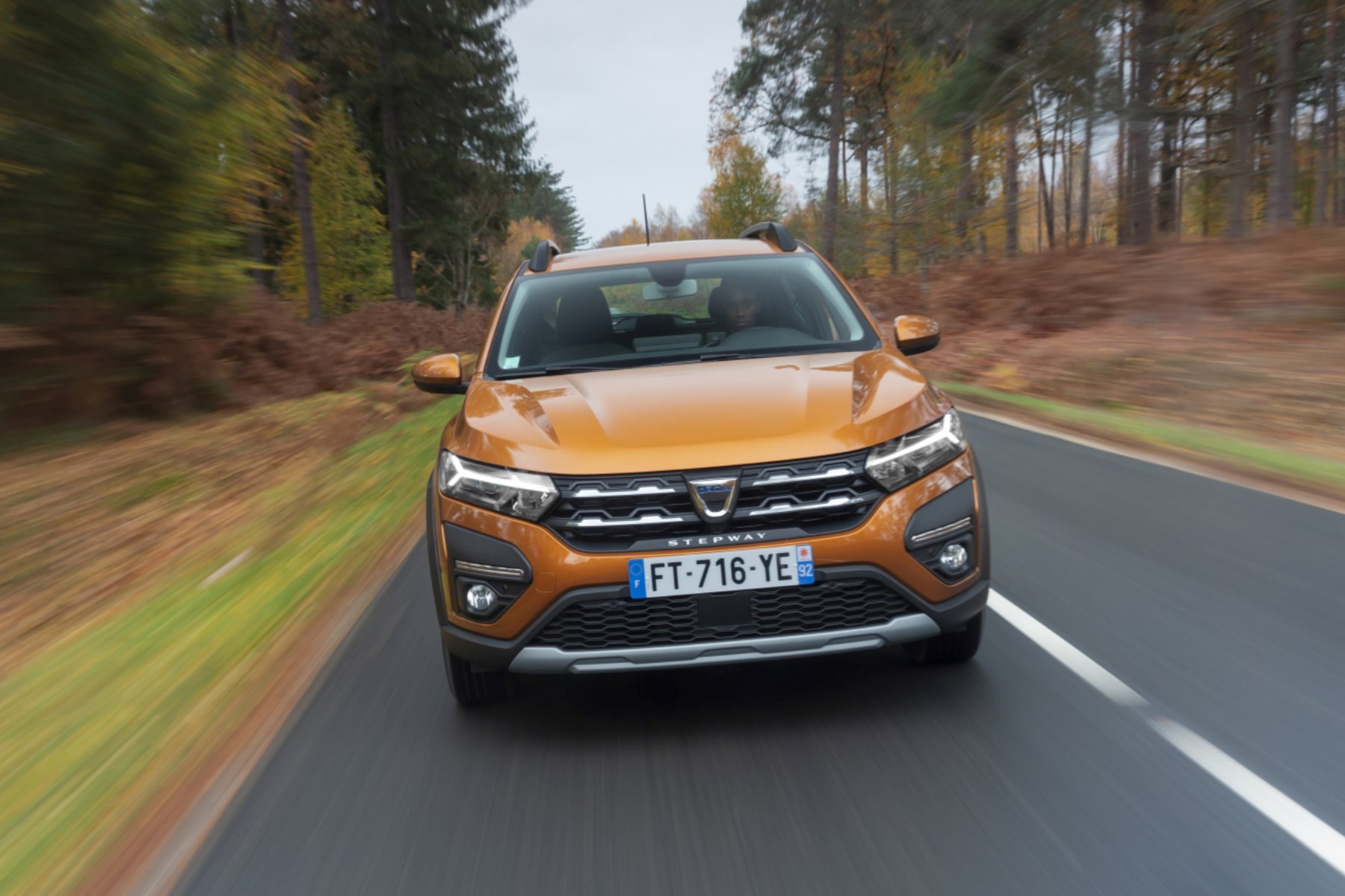► Starts from £10,995
► Expensive compared with regular Sandero
► Tight panel gaps, excellent paint quality
The Dacia Sandero Stepway arrives on the UK market to join the Duster as a great-value family car that offers all the joys of a new motor for a similar cash price to a secondhand offering from a mainstream manufacturer.
It might look like the last Stepway, but this one is all new and bristling with technology – trust us on that.
The Stepway and its Sandero sister car sit on the same CMF-B platform that the current Renault Clio uses, which features plenty of shared interior tech, as well as being powered by the same excellent three-cylinder TCe power unit. In the Stepway, it’s offered in just two forms – an 89bhp petrol, and 98bhp petrol/LPG Bi-fuel.
As before, the Stepway is a mildly-SUV-ified version of the Sandero. Consider it a Rover Streetwise for our times. The ride height is raised by 40mm, you get side cladding and roof bars – all for a premium over its vanilla counterpart.
It’s a recipe that works these days – the Stepway outsells the Sandero 6:4.
What’s the Sandero Stepway up against?
There’s no escaping the fact the Stepway is expensive compared with a Sandero. Entry-level is the Essential model, which comes in at £10,995. This compares with £7995 for the much more stripped-out Sandero Access and £9170 for the equivalent Sandero Essential TCe 90. But it’s still cheap if you look at it as an alternative to any other crossover.

If you’re here, you’ll have already concluded that it doesn’t have many rivals for the money. Go on price alone and you’re looking at entry-level small cars, such as the Citroën C3, Skoda Fabia or the underrated Suzuki Ignis, or, for a little more SUV attitude, try a used example of the much more expensive Ford Fiesta Active or the now-discontinued Hyundai i20 Active.
If crossovers are your thing and you’re on a budget, perhaps the bargain-priced MG ZS or SsangYong Tivoli are other cars on your list. But the Stepway undercuts all of the above in cash terms – it really is uniquely priced and specified for your money.
What’s it like to drive?
The Stepway makes a great first impression. It impresses with its modern styling, chunky stance, tight panel gaps and excellent paint quality. The easy-to-use controls and roomy interior, and (in our mid-spec model) a very usable infotainment set-up, are also real positive points. The days of putting up with sub-standard build and tech in an entry-level car have long gone.

The Stepway drives every bit as well as you’d hope. In 99bhp 100 TCe Bi-Fuel (LPG) form, it never sounds or feels too harsh, no matter how hard you drive it. But it is a cruiser – relax and take it easy, the engine noise recedes into a background hum and it covers distances very nicely indeed. Respectable mid-range pull and comfortable suspension set-up combine to make it a very relaxing car to drive gently.
It’s not perfect, though. On the motorway you need to work it hard, especially if it’s loaded. And it can get loud. You really do need to get busy with the gearbox if you want to make rapid progress, such is its paucity of midrange torque. It’s also rather peaky – the power comes in surges rather than smoothly, which suggests its boost control needs a little more finessing.
It’s definitely set up for comfort and not speed. The main issue is that the Stepway likes to roll in corners. And for those who enjoy the sparkle of a small car, this is a bit disappointing. Don’t get us wrong – it’s good to have a car that rides rough roads smoothly, and this comfort bias suits the car perfectly well.
What’s it like inside?
The Stepway feels more Renault than Dacia, which is no bad thing. The technology and equipment levels are day-and-night better than the last one, and the wide use of higher-quality plastics and trim materials is to be welcomed.
There are small touches that really make a difference, such as fabric inserts on the dashboard. The steering wheel, heating controls and other touch points are all much nicer to use now – and the overall ambience is lifted by the use of contrasting orange stitching on the seats. Small touches, but they really do lift the interior.

Equipment levels have been boosted too. All models get a height-adjustable driver’s seat and armrest, adjustable steering column, open centre console storage and manual air-conditioning. Front and rear room are impressive for a car of this size – and price – while the boot space wouldn’t look out of place in the mainstream Ford Focus/Volkswagen class.
LPG, you say?
We do. We’re driving the LPG-equipped model, which in Dacia’s world is a very low-priced alternative to more conventional hybrid-powered low-emission models. So, you get much lower g/km CO2 figures on LPG, without a massive cost being passed on to the customer. If you live near a gas station, it could be a no-brainer.
The side benefit of this is that with both tanks brimmed it gives you an 800-mile range. In an increasingly EV-dominated era, that is refreshing. It’s a neat bi-fuel conversion, too, with LPG read-outs integrated into the main display and the filler sharing space under the same flap as its petrol counterpart.
The LPG-powered TCe 100 works really well, with an integrated tank and controls that don’t affect the overall practicality of the car (aside from losing the spare wheel). There’s a lot to be said for running it on half-price fuel. Bi-fuel adds £400 to the price of a standard Stepway, and if you’re a higher-mileage driver, you could soon see that paid off.
Verdict
We really like the Sandero Stepway. Yes, it’s more expensive than the standard Sandero hatchback but it’s still an honest, likeable and comfortable family car. The engine is willing, it gives good performance, lopes along like a proper old-school French car, and gives excellent fuel economy. As long as you don’t spend all day on the motorway, it’s a very decent steer.

The big question whether we’d buy one over something secondhand from a mainstream brand.
The answer has to be yes if buying new and paying cash is very important to you – the tech is up-to-date, the interior is well put together, and it should last for years without falling apart. Whether we’d take one over a Sandero hatchback is another question entirely…